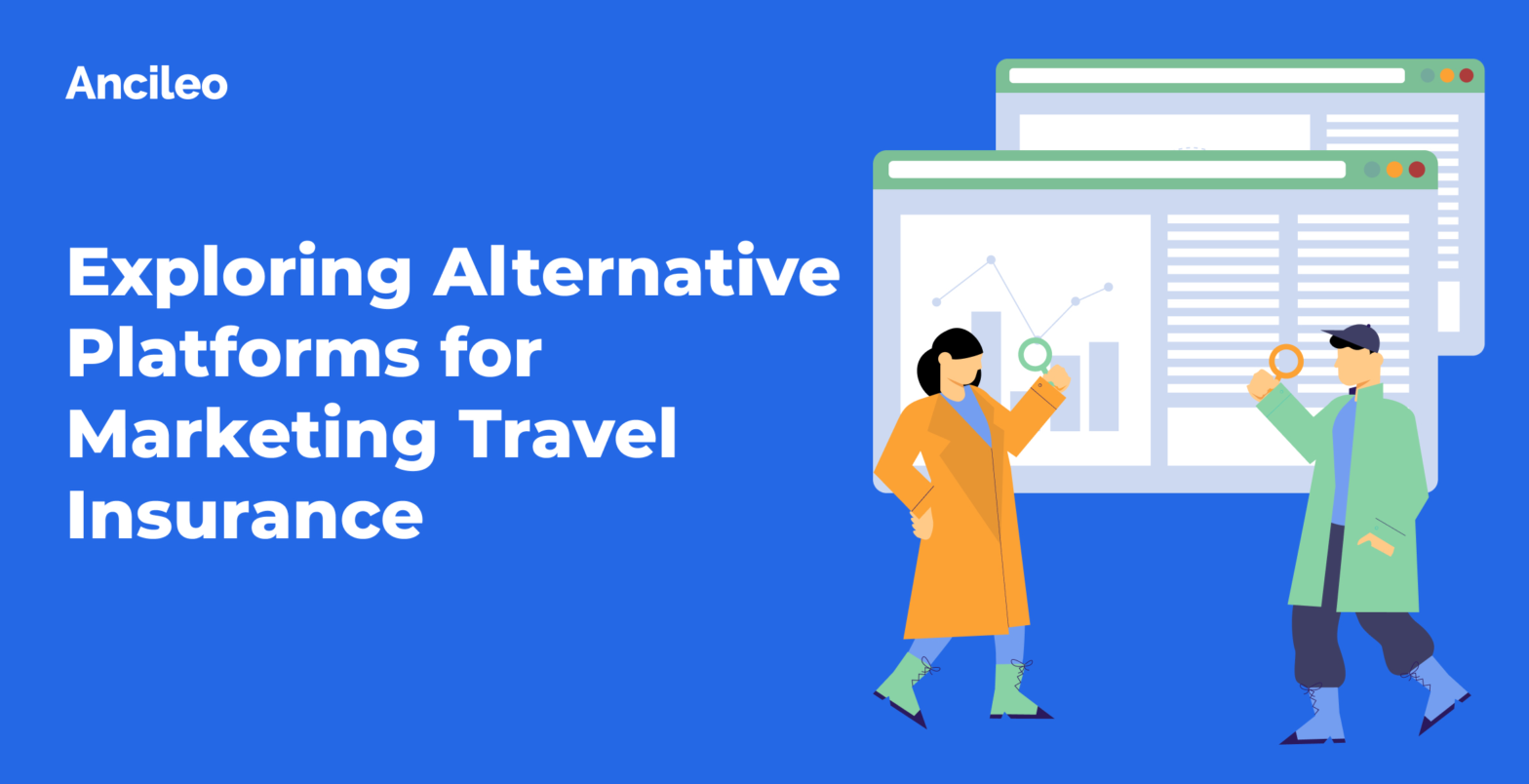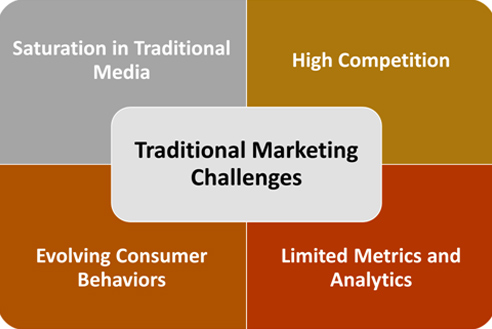
Effective marketing plays a vital role in the survival of a travel insurance company. As the market continually expands, travel insurers need to explore alternative marketing platforms to remain competitive. While it’s true that traditional marketing channels have been reliable, the travel landscape is rapidly evolving, demanding a shift from conventional methods to more innovative strategies that resonate well with the modern traveler.
In this article, we’ll take a closer look at the challenges that travel insurers face in traditional marketing and explore untapped opportunities in emerging platforms.
Travel insurers have long relied on traditional marketing platforms to get their message out there. But, as the industry evolves, so do the challenges that come with old-school methods:

Think about turning on the TV or flipping through a magazine—you’re bombarded with ads left and right. It’s not that these channels are ineffective; it’s just that the sheer number of businesses competing for attention makes it easy to get lost in the noise. Businesses are trying to shout louder than the rest to be heard, but in the end, it becomes a chaotic symphony of messages, making it tough for any single company including travel insurers to be noticed.
Travel insurance is a bustling market. Traditional tactics, while they’ve served us well, are now faced with rising competition. It may be easy to make your name known, but making sure that you truly stand out can be challenging as consumers are overwhelmed with many choices. That’s why it’s essential to come up with fresh and innovative strategies that will surely stand out from the crowd—an objective easily achievable by exploring alternative platforms.
The way people interact with content is changing fast. Traditional marketing approaches might find it tricky to keep up with evolving consumer behaviors, like the growing use of ad-blockers, the shift away from cable TV (cord-cutting), and a strong preference for on-demand, personalized content. To succeed in marketing your products, it’s crucial to sync up with these changing behaviors.
Traditional marketing channels usually don’t offer the detailed analytics you get with digital platforms. Figuring out how well a campaign is doing can be a bit of a puzzle, making it tougher for insurers to really get what clicks with their audience. Limited metrics get in the way of tweaking strategies on the fly and making future marketing efforts even better.
Digital marketing provides travel insurers with an active space to connect with potential customers. Unlike traditional channels, these platforms empower insurers to pinpoint specific demographics effortlessly, facilitating the development of highly personalized and targeted marketing campaigns.
Digital marketing enables travel insurers to quickly connect with customers and adjust their strategies based on instant feedback. This presents a significant advantage over traditional media, which is often slower and less responsive. Furthermore, digital marketing proves cost-effective as insurers can concentrate on high-impact platforms, ensuring resource optimization and maximizing their return on investment.
Since we are in the age of social media, it’s a wise idea to target these platforms for marketing travel insurance products. Social media has evolved into the central hub of global connectivity, offering travel insurers a valuable opportunity to not just showcase their products but also actively engage with a broad and diverse audience.
By strategically navigating these social media channels, travel insurers can effortlessly become a part of their target audience’s daily routines. Whether it involves crafting captivating visuals or actively joining discussions, the opportunities on social media are boundless. Moreover, these platforms are rich in data, enabling precise targeting to ensure that marketing efforts reach the most interested audience segments.

Social media thrives on visually appealing and shareable content. Travel insurers can showcase their offerings through eye-catching visuals, informative infographics, and captivating videos. Incorporating user-generated content and real-life travel stories can enhance authenticity.
Social media is not just a broadcasting tool, but also a space to foster community. By actively engaging with followers through comments, direct messages, and interactive posts, travel insurers can create a sense of belonging and trust. Conducting Q&A sessions, polls, and contests fosters active participation and enhances the relationship between the insurer and the customer.
Social media platforms offer sophisticated advertising tools that enable travel insurers to target specific demographics. Tailoring ads based on factors like age, location, and interests ensures that marketing efforts reach the right audience. This targeted approach enhances the efficiency of ad spend and boosts conversion rates.
Podcasts and webinars have witnessed an unprecedented surge in popularity. The convenience of consuming content on-the-go has contributed to the rise of podcasts, while webinars offer a real-time, interactive experience. Travel insurers can leverage this trend by providing insightful and educational content tailored to the needs and concerns of potential customers.

Hosting industry experts in travel safety, health, and insurance on podcasts and webinars not only adds credibility but also provides valuable insights to the audience. Expert interviews allow travel insurers to showcase their knowledge and commitment to ensuring a safe and informed travel experience.
Educational content goes beyond merely promoting services. It’s about empowering the audience. Travel insurers can offer practical tips, in-depth analyses of travel risks, and insights into insurance coverage nuances. Providing valuable information positions insurers as trusted advisors in the travel insurance domain.
Consistent participation in podcasts and webinars allows travel insurers to also go beyond sales pitches. By sharing industry trends, discussing emerging challenges, and proposing innovative solutions, insurers can establish themselves as thought leaders. This not only fosters trust but also positions the insurer as a go-to resource for travel-related insights.
Partnering with travel bloggers and influencers is also a potent strategy for reaching out to a broader audience. Their ability to showcase destinations, share personal experiences, and offer authentic recommendations has created a new avenue for travel insurers to connect with a highly engaged and diverse audience.

Partnering with travel bloggers and influencers for sponsored content allows insurers to integrate seamlessly into the narrative. Authentic storytelling about travel experiences, including the importance of travel insurance, can resonate more profoundly with the audience. This approach not only promotes the brand but also reinforces the significance of insurance in the travel journey.
Organizing events in collaboration with travel influencers creates a direct and interactive connection with the audience. Whether it’s a webinar, a Q&A session, or a travel-themed event, co-hosting allows travel insurers to leverage the influencer’s reach while providing valuable content and insights to the audience.
The journey ahead for travel insurers is brimming with possibilities. The traditional marketing landscape, while still relevant, is now joined by a dynamic array of channels that cater to the evolving preferences and behaviors of the modern traveler. The alternative platforms discussed in this article aren’t just about promoting, they also serve as spaces for storytelling, platforms for learning, and hubs for building authentic connections.